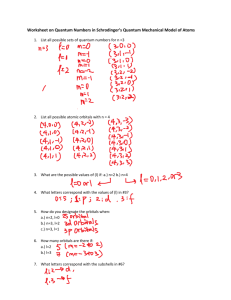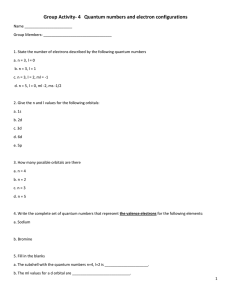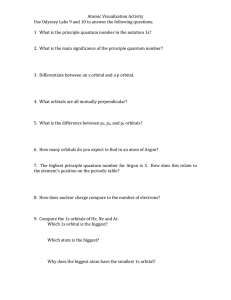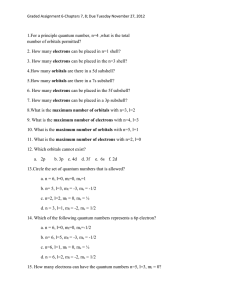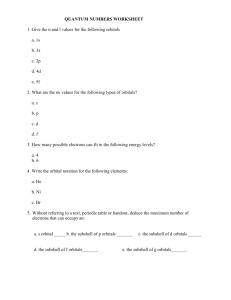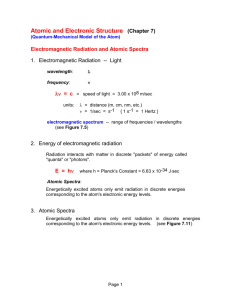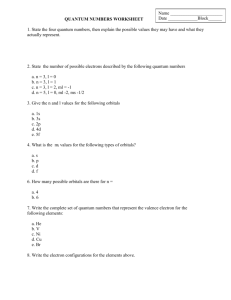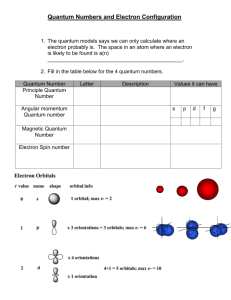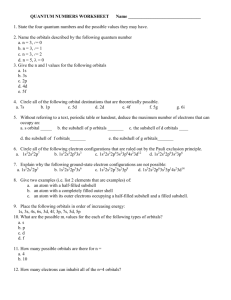Worksheet 16
advertisement
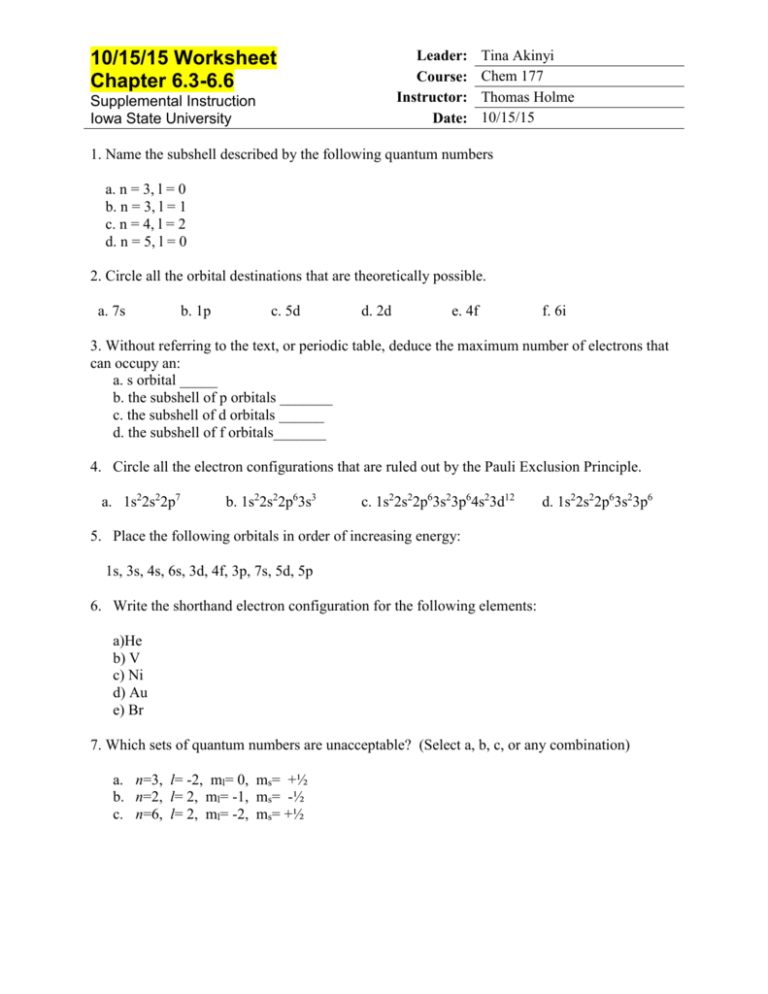
Leader: Course: Instructor: Date: 10/15/15 Worksheet Chapter 6.3-6.6 Supplemental Instruction Iowa State University Tina Akinyi Chem 177 Thomas Holme 10/15/15 1. Name the subshell described by the following quantum numbers a. n = 3, l = 0 b. n = 3, l = 1 c. n = 4, l = 2 d. n = 5, l = 0 2. Circle all the orbital destinations that are theoretically possible. a. 7s b. 1p c. 5d d. 2d e. 4f f. 6i 3. Without referring to the text, or periodic table, deduce the maximum number of electrons that can occupy an: a. s orbital _____ b. the subshell of p orbitals _______ c. the subshell of d orbitals ______ d. the subshell of f orbitals_______ 4. Circle all the electron configurations that are ruled out by the Pauli Exclusion Principle. a. 1s22s22p7 b. 1s22s22p63s3 c. 1s22s22p63s23p64s23d12 d. 1s22s22p63s23p6 5. Place the following orbitals in order of increasing energy: 1s, 3s, 4s, 6s, 3d, 4f, 3p, 7s, 5d, 5p 6. Write the shorthand electron configuration for the following elements: a)He b) V c) Ni d) Au e) Br 7. Which sets of quantum numbers are unacceptable? (Select a, b, c, or any combination) a. n=3, l= -2, ml= 0, ms= +½ b. n=2, l= 2, ml= -1, ms= -½ c. n=6, l= 2, ml= -2, ms= +½ 8. Write the values for the quantum numbers for the bold electron in the following diagrams: a. 3p orbitals c. 4d orbitals b. 5s d. 3d orbitals


